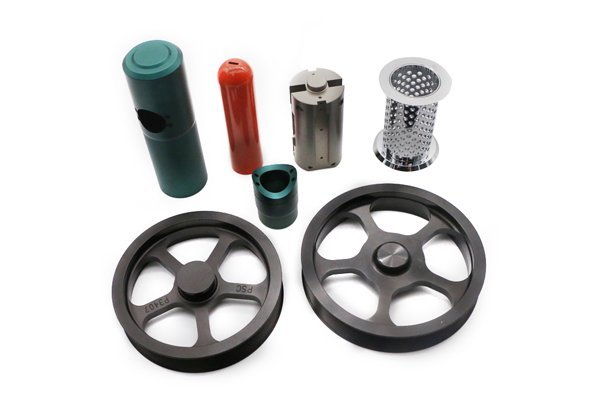—
: Facing the Toughness Dilemma
Did you know that titanium is known for its exceptional strength-to-weight ratio? In fact, titanium alloys possess some of the highest tensile strength among metallic materials, making them invaluable in aerospace, automotive, and medical applications. However, despite their impressive attributes, one alarming issue haunts manufacturers: a notable decrease in toughness after CNC machining of titanium alloys.
What is causing this paradox? Why does CNC machining, a process lauded for its precision and versatility, compromise the mechanical properties of titanium? This blog will delve into these pressing questions. You will discover why decreased toughness occurs, explore its multifaceted causes, and most importantly, learn effective solutions to mitigate these issues.
—
Understanding Titanium Alloys and Their Importance

Titanium alloys are primarily used in environments that require high performance and superior corrosion resistance. They are grouped into two categories:

Applications of titanium alloys extend beyond traditional industries, as they are essential in sectors including:
Exploring the Problem: Toughness Decreasing Post-CNC Machining
Toughness refers to the ability of a material to absorb energy and plastically deform without fracturing. It is crucial in applications where materials are subjected to dynamic loads. For titanium alloys, maintaining toughness is vital for safety and durability.
CNC (Computer Numerical Control) machining involves the use of precise computer-controlled machinery to shape materials. However, the process can introduce various stresses and temperature changes, leading to undesirable changes in mechanical properties.
—
Investigating the Causes of Decreased Toughness
During CNC machining, titanium alloys can experience work hardening, resulting from plastic deformation. This process alters the microstructure, increases hardness, and often decreases toughness.
Solution: Implementing appropriate machining strategies, such as using lower feed rates and optimizing cutting speeds, can minimize work hardening.
High cutting speeds and tool friction can lead to excessive heat build-up. Titanium alloys are sensitive to temperature, and excessive heat can result in transformations in the microstructure, such as alpha-beta phase changes, negatively impacting toughness.
Solution: Utilize coolant fluids effectively and consider tools with high thermal resistance to regulate temperature during machining.
Machining can create residual stresses within the alloy, which can exacerbate cracking and reduce toughness. The way the cutting tool interacts with the material can lead to internal stresses at various stages of the machining process.
Solution: Post-machining treatments such as stress relieving annealing can alleviate residual stresses and restore toughness.
Optimizing surface integrity is critical. Poorly machined surfaces can harbor micro-cracks and inclusions, leading to decreased toughness.
Solution: Focus on achieving superior surface finishes through fine machining tools and processes and inspect surfaces diligently.

The selection of the right tool material and geometry plays a significant role in machining efficacy and outcomes. Tool wear can impact the final machined surface and introduce defects affecting toughness.
Solution: Use high-quality cutting tools and regularly inspect to reduce wear and maintain geometrical accuracy.
—
Effective Solutions and Best Practices
Understanding the specifics of titanium alloys is essential. Adjusting the following parameters can greatly enhance toughness:
Choosing tools designed specifically for titanium machining can enhance performance:
Modern innovations, such as:
Implementing heat treatments or surface treatments can restore toughness after machining:
Incorporating rigorous testing methods, such as:
—
: Embracing the Challenge
As highlighted throughout this blog, while CNC machining of titanium alloys presents challenges such as decreased toughness, understanding the underlying issues allows for targeted solutions. By choosing the right machining parameters, tools, and post-processing treatments, manufacturers can significantly mitigate toughness loss.
The immense potential of titanium alloys in critical applications depends on the delicate balance of maintaining their exceptional properties through thoughtful machining practices.
This is a crucial subject worth considering for industry leaders and manufacturers: understanding how to preserve the integrity of titanium alloys not only enhances product reliability but also advances innovation in various domains. The path to mastering CNC machining techniques for titanium is clear—embrace these solutions and watch the quality of your products soar.
—




